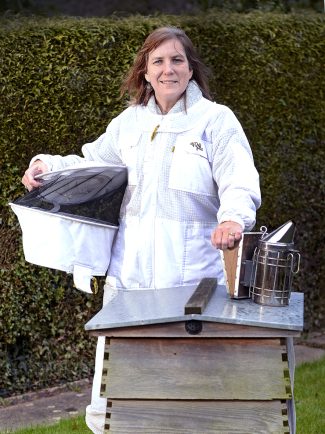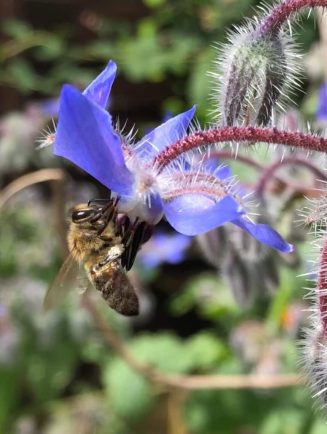Welcome to the sixth edition of Rubery beekeeper, Jas Payne’s monthly column. Take a fascinating glimpse into the beautiful, industrious and vital role of bees in nature and experience life as an apiarist.
June is a pivotal month for bees and beekeepers.
We’re now just past the longest day, and at this time of year the queen is laying the largest number of eggs that she can – around 2000 a day. That’s more than her own bodyweight in eggs!
This brings dangers to the hive.
Over the next four weeks the number of bees in each hive will peak, and a large hive could contain 60,000 bees.
Each day, bees will collect, and consume, large amounts of nectar and pollen, and also water, which is used to keep the hive temperature constant on hot days.
But you may be surprised when I tell you that nectar and pollen can be in short supply right now, especially as your gardens are probably looking colourful.
We call it ‘The June Gap’.
The last spring flowers are over, the fruit trees are well past blossoming, and crops like oilseed rape have finished.
Until the summer flowers open, and later fruiting trees yield blossom, the bees can find it hard to gather all the nectar and pollen that they need.
The June Gap varies depending on the weather, and many other factors, and some years there doesn’t seem to be a gap at all, but the uncertainty keeps us on our toes.
Like a number of beekeepers locally, I’ve provided a top up of food (granulated sugar dissolved in water) to some nucs to ensure they don’t starve. (A nuc is a small hive that can be used, especially at this time of year, to raise new queens, start new colonies, or prevent swarming.)
At any moment, the nectar flow could begin again, and almost overnight the bees will bring in huge quantities of nectar that they turn into honey. They do this by evaporating off the water – nectar is 80% water, whereas honey has below 20% water – and the bees will work night and day during a nectar flow to cure the honey, and cap it with wax to keep it at its best.
It’s not unusual for a large hive to make 20lbs of honey or more in a week! Busy bees!
Written by Jas Payne
You can read Jas’ beekeeping column in the Bromsgrove Standard on the last Friday of every month.
It will also be released here online.













